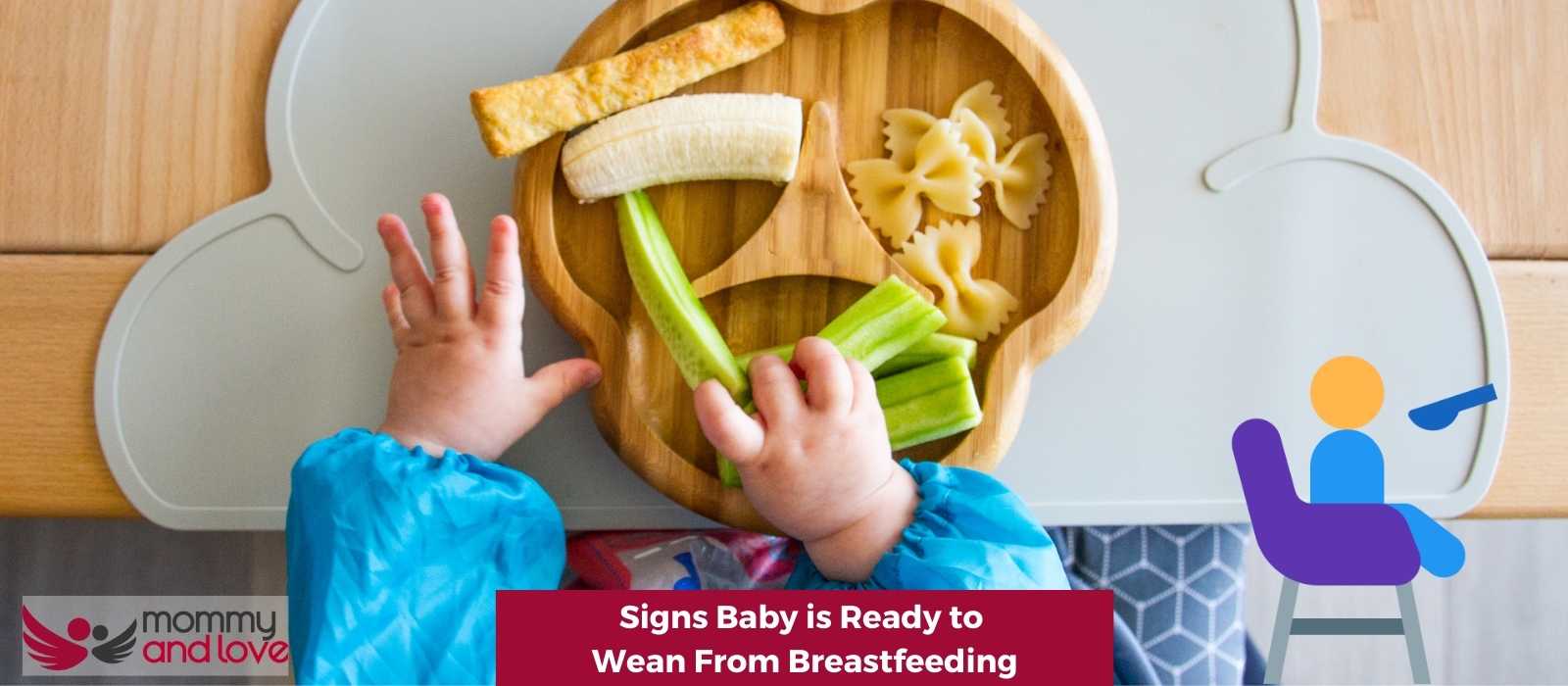Despite reams and reams written about weaning your baby, many myths and a great deal of confusion continue to affect the decision as to when you should wean your baby and stop breastfeeding.
First of all, let’s get one thing clear…..there is no tried and tested way of weaning perfectly, so don’t beat yourself up if you feel unsure about the whole process….it’s simply a matter of working at your baby’s own pace!
The American Academy of Pediatrics (AAP) recommends exclusively breastfeeding for your baby’s first 6 months, in addition to adding solids along with breastfeeding up until 12 months of age. How long you choose to breastfeed for is up to you, and your baby.
It used to be recommended that babies introduce solid foods to babies between the ages of 4 and 6 months. Recent health recommendations – such as the AAP’s – have, however, come down in favour of six months as the cut-off point, and many who follow baby led weaning may decide to wait until 8-9 months. We’ve done a full guide to blw here.
Why wait until 6 months?
Well, first of all, because, by the age of 6 months, your baby has had time to develop so that they can fully cope with solid foods. Also, many will be able to make an attempt at feeding themselves and often will try and eat solid foods by grabbing the food around them.
They’ll also be more capable of moving food around their mouth and of chewing and swallowing. This may mean that they’re able to enjoy food that’s mashed or lumpy, and some finger foods.
Many moms do, however, feel that their baby needs to start solids before 6 months, so, if you fall into this camp, speak to your physician or pediatrician, who will be able to advise you, but the official advice is that its best to leave younger babies on breastmilk.
When to start weaning

There is no hard and fast rule about the optimum age for beginning to wean, but most moms can spot the signs and can begin to introduce the process gradually.
As per the AAP’s recommendation, there are plenty of good reasons to wait until your baby reaches six months of age before you start the weaning process.
While breast milk and formula have all of the nutrients that babies need, the next dietary stage is the slow introduction of solid food (initially in conjunction with milk at the beginning).
There’s also a physical aspect to weaning….
As your baby becomes more active, they’ll also start to use lots more energy. Pushing their chest away from the floor, rolling over or practising sitting up will all give them a bigger appetite, which means it’ll soon be time to move on to more than milk.
When a baby is ready to be weaned depends very much on their own individual needs. Ask yourself the following questions:
- Can your baby support their head?
- After a full milk feed, do they cry or demand more?
- Do they reach out for their food?
- Do they find it harder to wait until the next feed?
- Are they becoming easily irritable or chewing their hands?
- Where they’ve previously slept through the night, do they now wake up for a feed?
- Do they seem hungry and ready?
Signs Your Baby is Ready to Wean
It can be a good idea to check with your baby’s pediatrician before you start weaning. Specific signs that your baby is ready to be weaned from breastfeeding include:
- Your baby wants to breastfeed or drink formula often
- Your baby has doubled their birth weight
- Your baby seems interested in solid food they’re eating
- Your baby puts their hands and toys in their mouth
- Your baby opens their mouth when they see others eating
- Your baby can sit without support
- Your baby can hold their head upright and steady (this shows swallowing muscles are strong)
Baby talk
If you’re not sure that your baby is ready for weaning, the good news is that your baby may be able to help…..by giving you the signs that they’re ready to wean…
Here is our guide to the signs to look for…..
Lack of interest in feeding
Did you know that your baby breastfeeds as much for comfort from you as for basic nutrition? Once they reach 12 months of age and are enjoying a range of other foods, you may find that they nurse simply to be close to you. If you’re finding that your baby is breaking off from breastfeeding for ‘breaks’, then they may be ready to stop them altogether.
Your baby breastfeeds less often

As your child starts to become more interested in exploring what’s going on around them, you may find that they practically wean themselves.
Also, the fact that they’re enjoying a more varied diet means they may not be experiencing the same hunger pangs as before. This is not likely to happen before the age of 12 months, however.
As an older baby starts to feed more from solids and get their nutrition from solid food, continued breastfeeding is often for nursing and comfort.
Solid foods are more attractive
Let’s face it….while your baby may enjoy the comfort and protection of being connected to you through breastfeeding, when faced with an exciting range of home-cooked, freshly-made food, why would they stick with the same milk all the time?
As a mom, you may begin to notice that your baby has lost interest breastfeeding just at the point when they’re eating more solids and filling up on them. Eating solid foods is the natural progression but if you or your baby wish to continue breastfeeding in conjunction with feeding, that’s this is fine, there is not need to stop breastfeeding completely or go cold turkey.
Independence the name of the game
Most babies and young children enjoy becoming independent so, once they learn to feed themselves – however messily! – they enjoy more well-rounded meals.
Also, from about the age of 6 months, babies can learn to drink from a cup and often begin the process of weaning automatically. The more they ask for a cup, the more the weaning continues.
They learn to make themselves understood as part of the weaning process
Once your baby is able to make themselves understood, you may find that they are able to articulate what they want. While younger children will communicate by biting your nipple or pushing you away, a young child of say 12 months will be able to tell you what they want.
When breastfed babies starts to play up during the breastfeeding session, go on nursing strike or showing definite signs of self-weaning then these are all signs.
Mother Led Weaning
Whilst the concept of baby-led weaning is well documented and understood, for many moms who have been doing exclusive breastfeeding for 6 months plus, they often feel that it was time to stop, they wanted their body back and this is completely normal.
Whilst many moms have many varied mixed emotions over ending their nursing sessions, many other moms will admit to being happy to have a little bit more freedom. It’s a very personal decision, so don’t feel pressurised into doing it.
When I weaned my fourth child, I knew the time was right and I was ready to burn those nursing bras! He had bitten me one too many times and the breast abscess was the final straw and a clear sign we were both ready to move onto the next stage of our journey!
If you want to start the weaning process but your baby does not, you can always talk to your lactation consultant about slowly reducing your milk supply, and moving the baby onto whole cow’s milk or bottle feeding. It’s best to gradually substitute breastfeeding with more solid foods or infant formula.
Take Away on signs a baby is ready to wean off breast milk
I’ve spoken to hundreds of mothers who have weaned over the years and the one thing they all have is a very different journey when it comes to stopping breastfeeding. For some, it happens naturally as their child grows and begins to self wean. For many women it’s a time of joy, whilst for others great sadness.
But rest assured, as your baby moves through this phase, as you introduce solids and new foods, the parenting journey is just taking another little step!

This article was written by Sandra Baker – full time writer and the mother of four amazing kids (including twins!)
She’s also a breastfeeding counselor and has spent years helping new parents learn how to care for their children. When she’s not writing or caring for her children, Sandra likes to spend time reading and taking walks with her husband.




